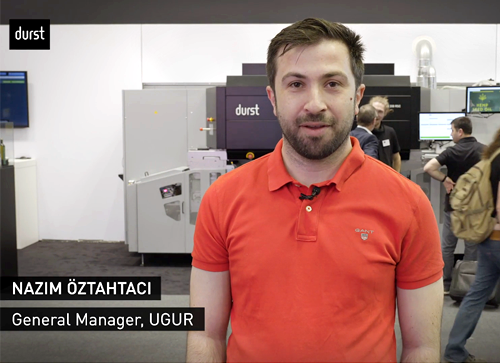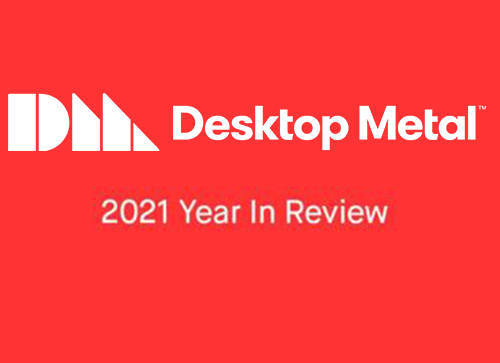To the stakeholders of Desktop Metal:
In 2015, Desktop Metal was founded with an audacious goal that had long eluded the 3D printing industry: mass production. We did not choose this goal lightly.
While more manufacturers than ever were benefiting from 3D printed prototypes, tooling, and low-volume applications, few were scaling to high volumes because the technology was too slow and expensive for production.
Our team was determined to overcome this hurdle because we passionately believe that 3D printing can deliver important innovation and sustainability benefits to the world. These benefits – such as lighter components, shorter supply chains, and reduced waste, to name just a few – are more important to our changing world than ever before. But our team knew: these benefits wouldn’t be truly meaningful to society until the technology was affordable vs. conventional manufacturing and fast enough to be used for real series production.
This was, and remains, the heart of our vision for Additive Manufacturing 2.0.
In 2021, our first full year as a publicly traded company, we reaffirmed our commitment to this goal and are building an army of engineers, PhDs and industry leaders to push the 3D printing industry into this long-elusive territory.
In addition to driving triple-digit YOY growth in our organic metal offerings through the first three quarters of 2021, we locked up important assets as we executed on a focused, three-pronged strategy:
- Gain supremacy in 3D printing platforms that can deliver a combination of speed, tolerances, surface finish and material properties to truly qualify as high-volume production tools at a cost that competes with conventional manufacturing.
- Of the seven 3D printing processes recognized by the American Society for Testing and Materials (ASTM)1, we focus primarily on only two — binder jetting and digital light processing2 — both of which are known for enabling high throughput area-wide processing and for improving over time based on investments from third parties.
- Through our acquisition of ExOne, we now have the broadest selection of binder jetting solutions, a strong IP portfolio, and the most experienced team in our industry. We are now the No. 1 binder jetting company by market share3.
- Through our acquisition of EnvisionTEC, the original innovator in digital light processing, we have gained entry at scale into photopolymer mass production as well as access to over 135 issued and pending foundational patents (many of which we believe to be blocking) and a rich library of best-in-class materials.
- We have made significant progress on our Production System P-50 program. Despite an unusual supply chain environment, we are now in a position to start shipping P-50 printers within single digit weeks, and we’ve tripled production capacity to accelerate our manufacturing ramp in 2022.
- Our first full year of selling and installing Shop Systems has been a big success turning the product into the No. 1 selling metal binder jet printer in the world, with SMEs delighted by the speed, quality, and ease of use of this turnkey production metal binder jet system.
- Vertically integrate into the consumables for our printers to strengthen our highmargin recurring revenue streams and enable reliable, high-performance parts for our customers.
- Over the course of the year, we expanded beyond metals to bring the benefits of production 3D printing to parts and products made with photopolymers, ceramics, composites, elastomers, and waste stream materials, such as wood.
- Our new Flexcera™ resins, for example, are already being used for high-volume production of dentures with industry-leading properties.
- Adaptive3D offers our customers the world’s best performing printed elastomers4; we believe their resins, combined with our Xtreme 8K solution will usher in a new era of productivity in photopolymer printing.
- Advance new, killer applications designed to drive high-volume adoption of 3D printing.
- Our new Forust process builds a greener future through 3D printed wood derived from two wood waste streams: sawdust and lignin. This business is running well ahead of plan.
- Aidro is taking 3D printing of high-performance hydraulic components, such as valves and manifolds, for the energy and aerospace industries to new volumes. We are excited to report that Aidro now has parts that are flight qualified at a leading aerospace company.
- We launched Desktop Health to accelerate 3D printed dental and biofabrication applications at scale. Our advanced dental solutions are already being used widely. In the second half of 2021, customers printed over 100,000 Flexcera dentures, and we now count over 12,000 dentists as customers of our parts platform. Dental is one of the fastest growing segments of our business and we believe a substantial portion of the $30B5 in annual spend on restorations and orthodontic appliances currently procured by dentists will transition to digital manufacturing by the end of the decade, going right from the 3D printer into the patient’s mouth.
Over the course of the year, we demonstrated record growth and our expanding team remained focused through incredible external and internal change. We are entering the year a much stronger company, positioned for outsized growth into 2022 and beyond. In the past year alone, we have:
- Grown our IP portfolio to more than 650 patents, up from 120 just a year ago6.
- Assembled one of the world’s leading teams of production 3D printing experts. #TeamDM grew from 200 to more than 1,000 around the world, and we’re completely dedicated to the mission of making mass production via 3D printing fast, affordable, and impactful to the world.
- Grown our global manufacturing customer base from about 400 to 6,000+.
- Augmented go-to-market efforts by adding a direct sales force through the ExOne acquisition and expanding from 90 to over 200+ sales partners, now serving more than 65 countries.
- Grown our materials library from less than 20 to more than 250 materials that span metals, composites, polymers, ceramics, biocompatible materials, sands, wood, and elastomers. This was a herculean team effort and will be a key differentiator for our company going forward as materials drive applications and applications drive adoption of printing in mass production.
In sum, our team is well on its way to transforming what it means to make things, and we’re excited to demonstrate how our progress will translate into consistent financial outperformance.
We stand by our goal to reach ~$1B in revenue by 2025. We remain true to our strategy, outlined in our plan to go public, to leverage inorganic upside to grow; the investments we made in 2021 better position our company to reach and potentially accelerate that milestone.
When you see our overall performance in 2021, it showcases our commitment to delivering on the vision of mass production 3D printing and why we believe we are on the path to our long-term goal of achieving double digit share of the $146B market that additive manufacturing is estimated to represent by 20307. It’s worth noting that, even then, additive manufacturing as an industry will still be in its infancy, representing only ~1% of the estimated $12 trillion of global spend in the overall manufacturing sector8.
I want to thank our many customers — small and large, alike — who placed their trust in our company during 2021 to help them solve some of their most challenging design, engineering, and manufacturing problems.
We are well capitalized, and our plan remains to be adjusted-EBITDA positive by the end of 2023. Once we achieve that goal, we intend to reinvest all surplus back to meet our long-term growth objectives and continually improve our market share position. Eventually, this will lead to a dominant position with outsized profitability.
We have incredible things in store for 2022. We are building a flywheel of printers, materials, and killer applications that we believe will transform what it means to manufacture in a world that requires more sustainable and flexible means of production.
As we enter the new year, we’re delighted to have the good fortune of brilliant technical teams that are energized to work together for this greater good, and we thank you for your commitment to #TeamDM as we execute on our mission with more passion than ever.
Come join us on this journey to change the way we make things,
Onwards!
Ric


























